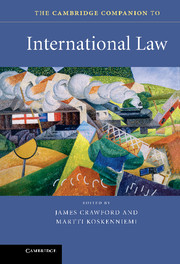Book contents
- Frontmatter
- Contents
- Preface
- Notes on contributors
- Introduction
- Part I The contexts of international law
- Part II International law and the state
- Part III Techniques and arenas
- 8 Law-making and sources
- 9 International courts
- 10 International institutions
- 11 International law and the relativities of enforcement
- Part IV Projects of international law
- Guide to electronic sources of international law
- International law chronology
- Select guide to further reading
- Index
- References
10 - International institutions
from Part III - Techniques and arenas
Published online by Cambridge University Press: 05 July 2015
- Frontmatter
- Contents
- Preface
- Notes on contributors
- Introduction
- Part I The contexts of international law
- Part II International law and the state
- Part III Techniques and arenas
- 8 Law-making and sources
- 9 International courts
- 10 International institutions
- 11 International law and the relativities of enforcement
- Part IV Projects of international law
- Guide to electronic sources of international law
- International law chronology
- Select guide to further reading
- Index
- References
Summary
Introduction
In politics and elsewhere, whenever people have banded into some form of organisation, be it a football club, a trade union or (why not?) a state, those entities tend to look for likeminded entities to cooperate with. Trade unions form federations of unions; football clubs form national associations that, in turn, form international associations; and states form international organisations.
States may do so for a variety of reasons. Often mentioned as a central element in the literature is the idea that international organisations may be of use when states have identified common purposes. Thus, so the argument runs, if states find that they need to organise the flow of mail across borders, they set up a Universal Postal Union. If they feel monetary stability needs to be guaranteed, they set up an International Monetary Fund. If they feel the need to cooperate more generally within their region, they may establish an African Union, or an Organisation of American States. And if they wish to form an ever-closer union, they may even set up something as ambitious as the European Union. This, at any rate, is the traditional, functionalist, story: states create organisations in order to achieve common goals and perform certain specified functions. However, as will be seen, this story leaves a few gaps.
- Type
- Chapter
- Information
- The Cambridge Companion to International Law , pp. 228 - 244Publisher: Cambridge University PressPrint publication year: 2012
References
- 8
- Cited by

